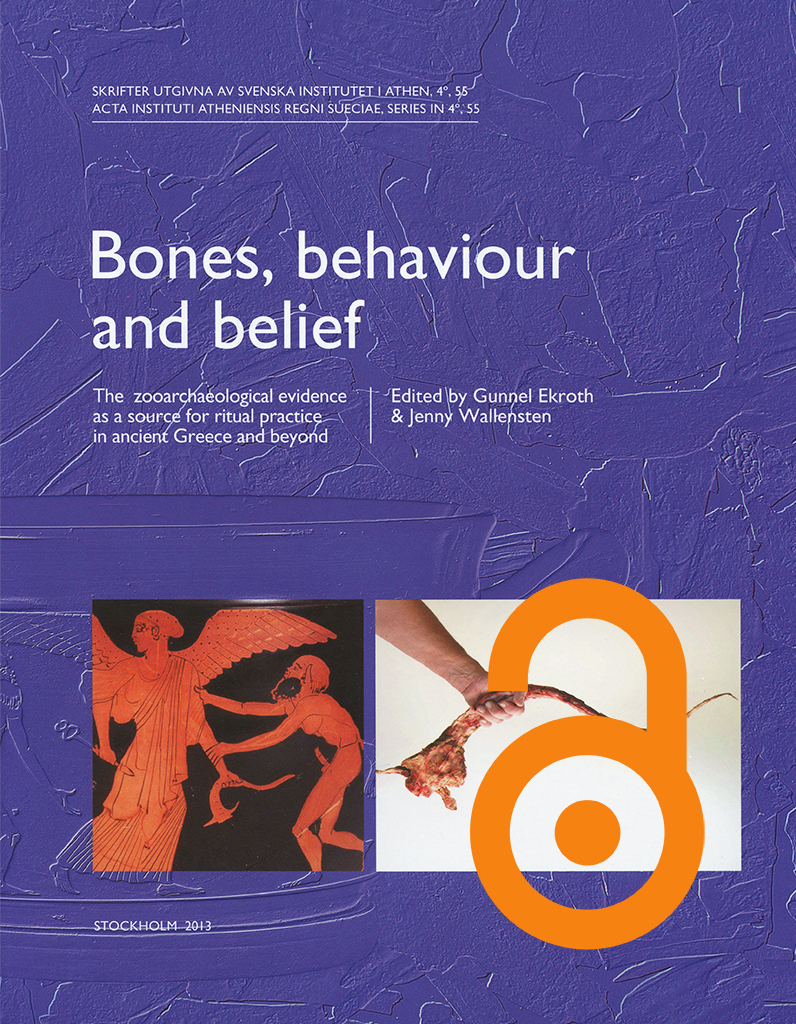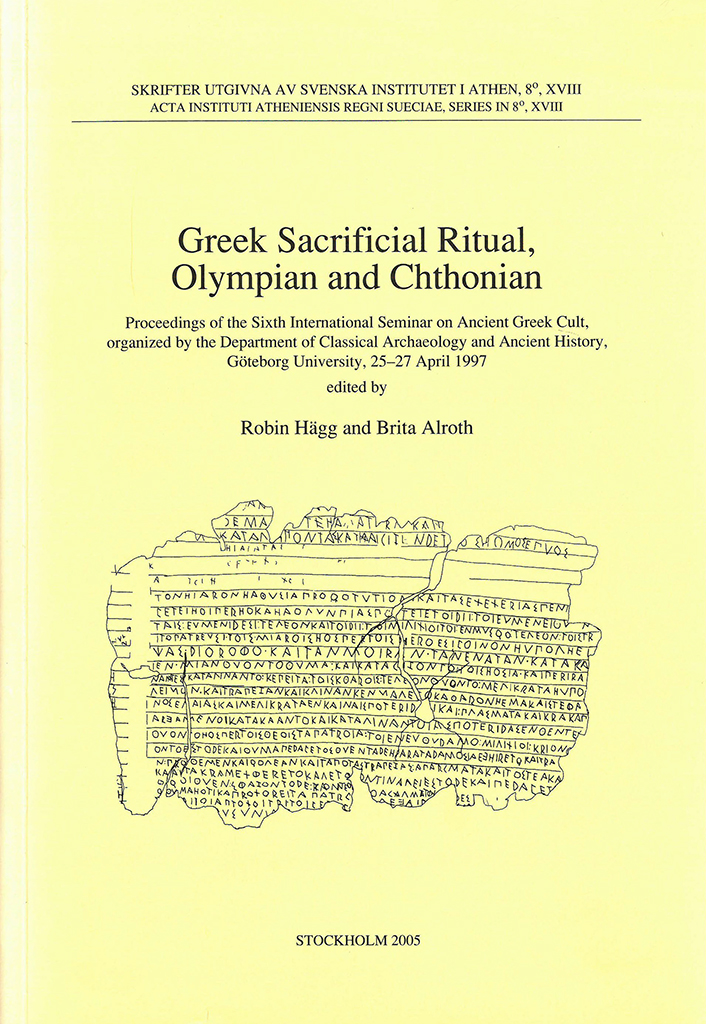Published by the Swedish Institute at Athens. Distributed by Eddy.se AB. All content is available with open access, use links below. Bones, behaviour and belief. The zooarchaeological evidence as a source for ritual practice in ancient Greece and beyond Edited by Gunnel Ekroth & Jenny Wallensten https://doi.org/10.30549/actaath-4-55 Abstract The importance of the zooarchaeological evidence as a source for ritual practices in ancient Greece is gradually becoming widely recognized. Animal bones form the only category of evidence for Greek cult which is constantly significantly increasing, and they can complement and elucidate the information provided by texts, inscriptions and images. This volume brings together sixteen contributions exploring ritual practices and animal bones from different chronological and geographical perspectives, foremost ancient Greece in the historical period, but also in the Bronze Age and as early as the Neolithic period, as well as Anatolia, France and Scandinavia, providing new empirical evidence from a number of major sanctuaries and cult-places. On a methodological level, the complexity of identifying ritual activity from the zooarchaeological evidence is a recurrent theme, as is the prominence of local variation visible in the bone material, suggesting that the written sources and iconography may offer simplified or idealized versions of the…
Published by the Swedish Institute at Athens. Distributed by Astrom Editions. Greek sacrificial ritual, Olympian and Chthonian. Proceedings of the Sixth International Seminar on Ancient Greek Cult, organized by the Department of Classical Archaeology and Ancient History, Göteborg University, 25–27 April 1997 Edited by Robin Hägg & Brita Alroth Abstract A collection of eighteen papers, read or circulated at an international seminar in Göteborg, that deal with the ancient Greek sacrificial ritual, with special reference to the traditional dichotomy between the Olympian and the chthonian aspect, the relevance of which has been questioned in modern research. Among the special topics discussed are sacrifices to heroes and in the cult of the dead, magical sacrifice, sacrifice to the sea, pig sacrifice and the sacrifice of pregnant animals. Other aspects dealt with include the role of dedications in the cult and the practicalities of ruler-cult, as well as the priest’s role in Greek sacrifice. Several contributions discuss the implications of the recently published lex sacra from Selinous for the understanding of Greek sacrificial practice, reinterpreting previously known inscriptions in the light of the new evidence. Two papers deal with descriptions of sacrifice in Greek tragedy (Aeschylus, Oresteia; Sophocles, Trachiniae). There is a…


